La Fiesta de San Fermín is more commonly known as the Running of the Bulls in the English-speaking world. Pamplona’s dangerous celebration takes place annually at the beginning of July.
What a celebration it is! La fiesta de San Fermín is a week full of all-night parties, live music, and people gathering from all around the globe!
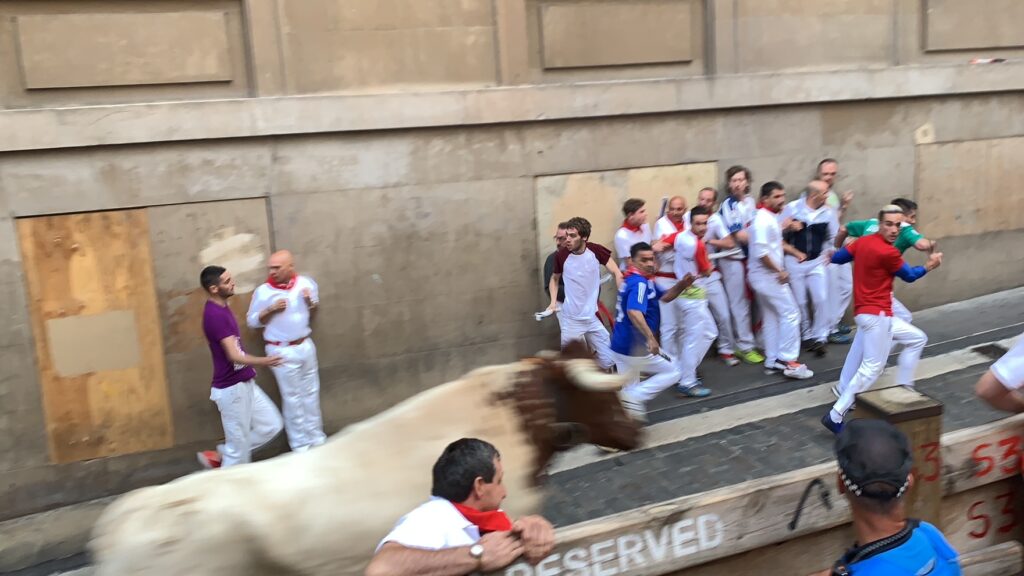
This article may contain affiliate links through associate programs. If you purchase an item using one of my links I will receive a small commission, at no extra cost.
San Fermín Origin
San Fermín was the city’s first bishop and the patron saint of Pamplona. He was raised in Roman-ruled Pamplona and was converted to Christianity at a young age. After formal education, he was given his bishophood and returned to Pamplona and the surrounding area with a mission to spread the word of God.
Soon he crossed into France in an attempt to convert Roman pagans to Christianity. According to legend, in the 40 days of his mission, he was able to convert over 3,000 pagans.
How did San Fermín die
Local pagan rulers were unhappy with his work. They imprisoned and beheaded him. Thus marking his ascension to Sainthood.
La Fiesta de San Fermín was created to honor San Fermín and was originally celebrated in the fall, to recognize the day he died. However, due to weather complications, the festival was later moved to July.
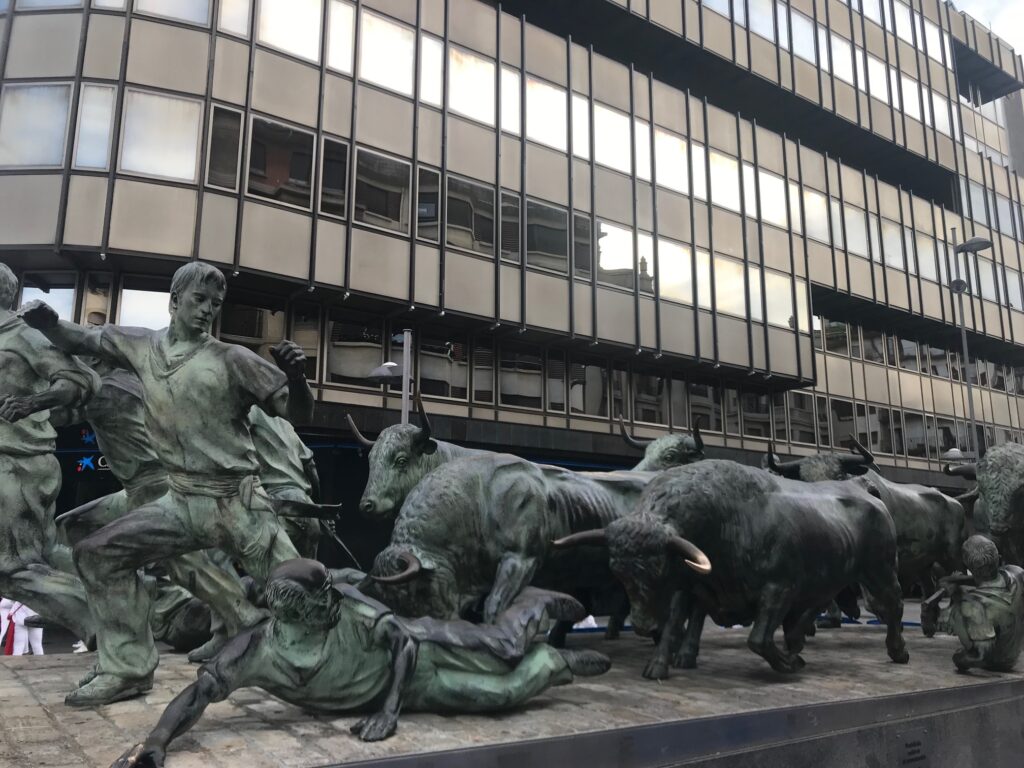
Why is the Running of the Bulls Celebrated?
The running of the bulls began as a way for cattle herders to transport their livestock to the city’s bullfighting arena, for fighting or for selling. It became common practice for the people to clear the streets in order for the herders to run their cattle from the country through the city streets to the arena.
This route was about half a mile long and eventually became a competition among local young men. They would jump in the streets to race each other and the cattle to the arena.
Eventually, La Fiesta de San Fermín and this competition merged into one incredible celebration.
When did San Fermín Start
La Fiesta de San Fermín is now one of the world’s most well-known parties. The festival as we know it began in 1592 in celebration of Pamplona’s patron saint, San Fermín. A procession in honor of San Fermín is recorded as far back as 1182 when a priest returned a relic of San Fermín back to Pamplona.
How much does it cost to go to the running of the bulls in Spain?
La Fiesta de San Fermín itself is completely free. The cost of travel and accommodation can add up.
However, there are budget-friendly options if you are already in Spain. I went to the festival in 2019 for just 35 euros.
I hopped on a group tour from Madrid. It left early in the morning and delivered you to Pamplona around 4 or 5 pm. We partied the entire night until it was time to run with the bulls. Some ran, some watched, then we got back on the bus around 10 am the next day. From there they delivered us back to Madrid.
Smart Insiders still offers a similar trip. This makes for an incredibly long day, but if you are on a strict budget this is an accessible and easy way to experience a once-in-a-lifetime opportunity.
Stoke Travel offers lots of different packages and options for visiting La Fiesta de San Fermín
What happens in San Fermín
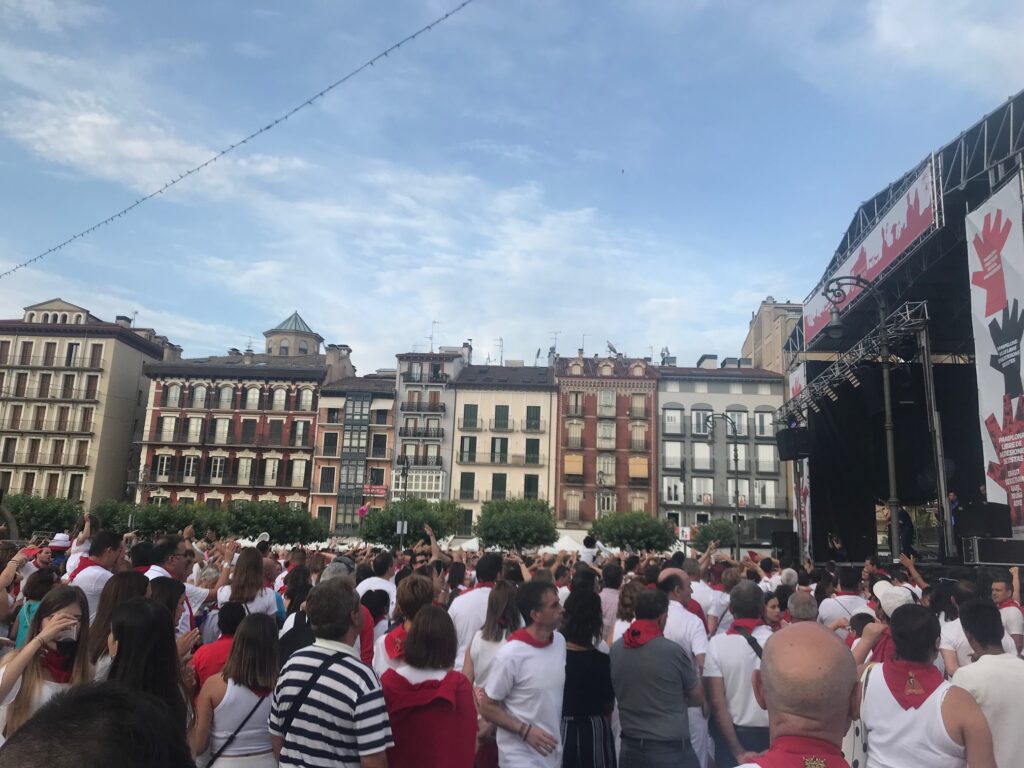
Many people don’t realize there is so much more to this festival than just the Running of the Bulls.
While the running of the Bulls and the daily bullfights are the most prominent part of the festival. The week-long celebration includes religious processions, fireworks, parades, and live music.
Check the official schedule of events here.
Mass in honor of San Fermín- Vísperas Solemnes de San Fermín
At 8 pm on the first day (July 6) of La Fiesta de San Fermín, a mass is held in honor of the patron saint of Pamplona. The service is held at La Iglesia de San Lorenzo and holds around 2,000 people.
Procession of Saint Fermín- Procesión de San Fermín
The procession takes place on the morning of July 7th and leaves La Iglesia de San Lorenzo. During the procession through Pamplona’s old city, members of the church and devoted community members march with a large statue of San Fermín through the city.
There are singing, dancing, and bands that join while the statue is brought through the old town and to the Pamplona Cathedral. A mass is then held afterward.
Outdoor Public Concerts- Conciertos
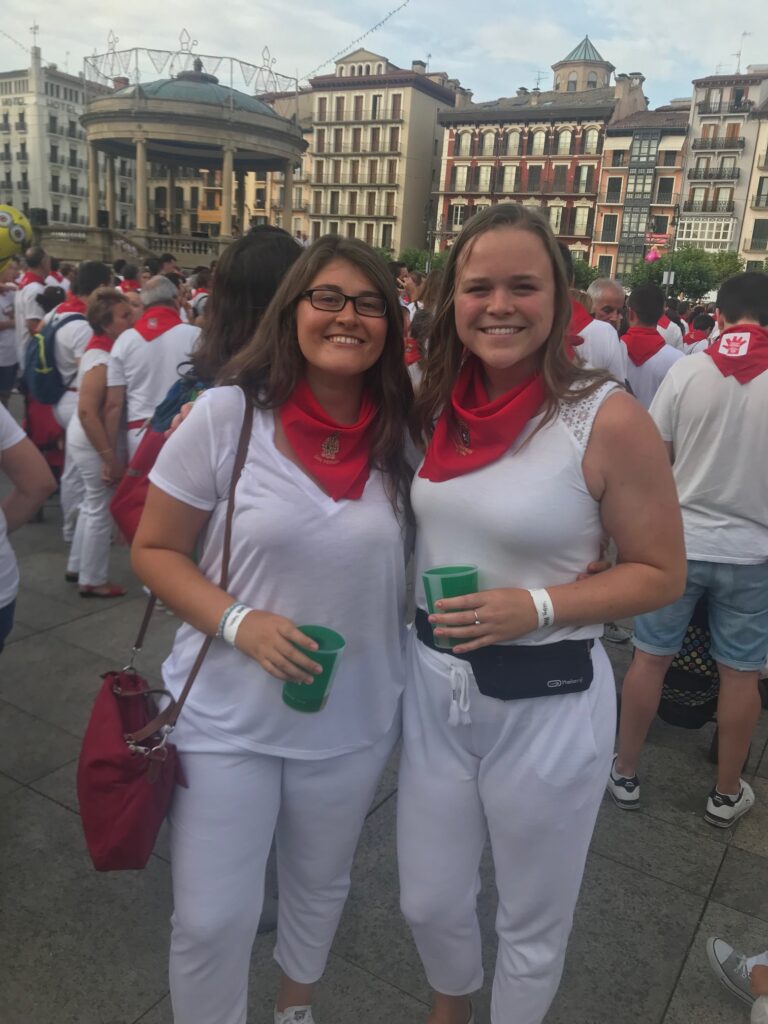
Concerts are held in nearly every plaza in the city.
They set up large and small stages, and have a mixture of performers and music styles. Including folkloric music, DJs, singers, reggaeton, classics, and modern music.
The music starts typically around 8 pm and goes on until the fireworks. The party starts in the streets and is a fantastic time.
What to wear to La Fiesta de San Femín
As seen in the picture above it is customary to wear all white with a red buff to the festival. We bought our red buffs from the festival, they all come with different crest options for the festival.
Folkloric Festival – Fiesta Folklorico
La Fiesta Folklorico takes place during the first day of the festival. This is a time when you can learn and celebrate the traditional music and dances of Navarra. People will dress in traditional cultural costumes, and dance the traditional dances.
Midnight Marching bands
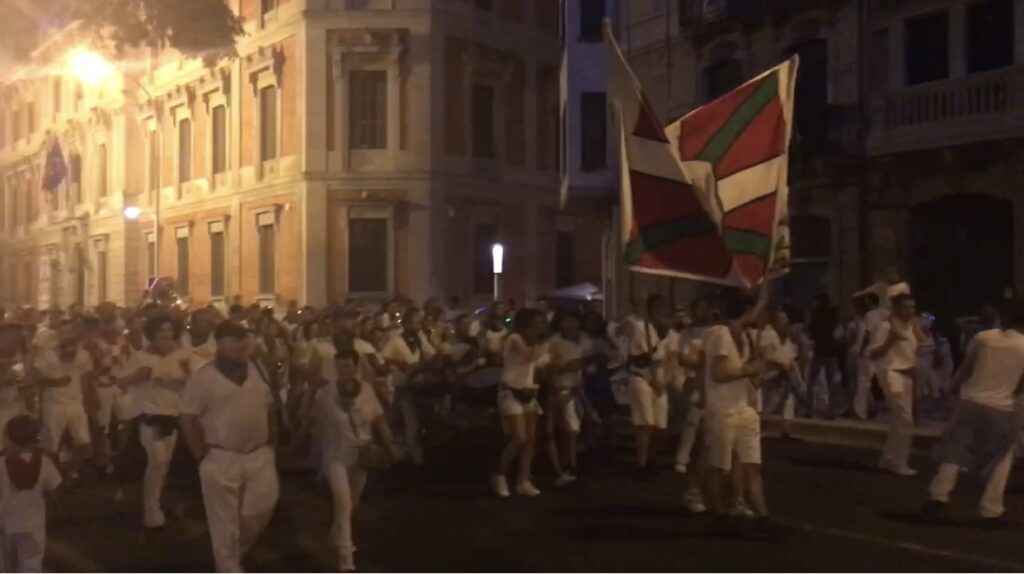
This is one of my favorite parts of the festival. A basque marching band takes to the streets, and the people follow.
Dancing in the streets with thousands of people to the music from these marching bands was so freeing and brought me so much joy.
Giants and Big heads Parade- Gigantes y Cabezudos
Gigantes y Cabezudos takes place daily throughout the festival and is a prominent part of the opening ceremonies. This is a parade with giant parade characters in typical folkloric dress and participants in costumes with large paper mache heads. Watching the dancing through the old city is truly something special.
Fireworks : Fuegos Artificiales
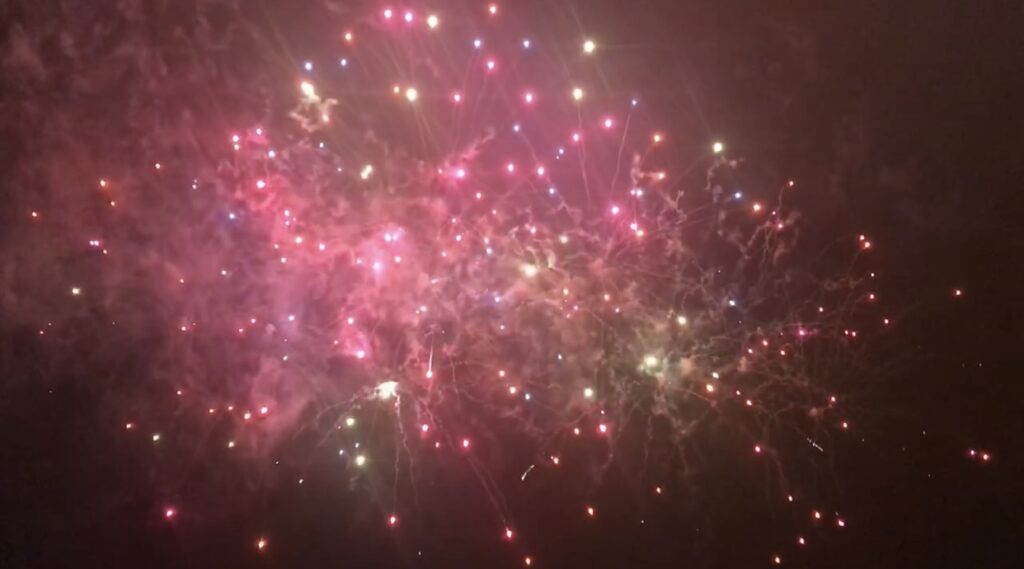
Every evening at 11:00 pm during the festival, Pamplona hosts a fireworks competition. The best spot to watch the fireworks are from the grass area near the bus station or from Parque de Ciudadela
This is hands down the greatest firework display I have ever seen in my life. You absolutely can not miss this!
Fire bull – Toro del Fuego
Toro del Fuego is a fake paper mache bull that is filled with firecrackers. This run begins at 10 pm each evening at Plaza de Santiago. Toro del Fuego’s purpose is to give the children a safe way to run with the bulls.
While it is advised to wear a jacket to protect your skin from the spray of fireworks, it is completely safe. This event runs for about 30 minutes each day, and is SO MUCH FUN!
Running of the Bulls: El Encierro & Bullfights
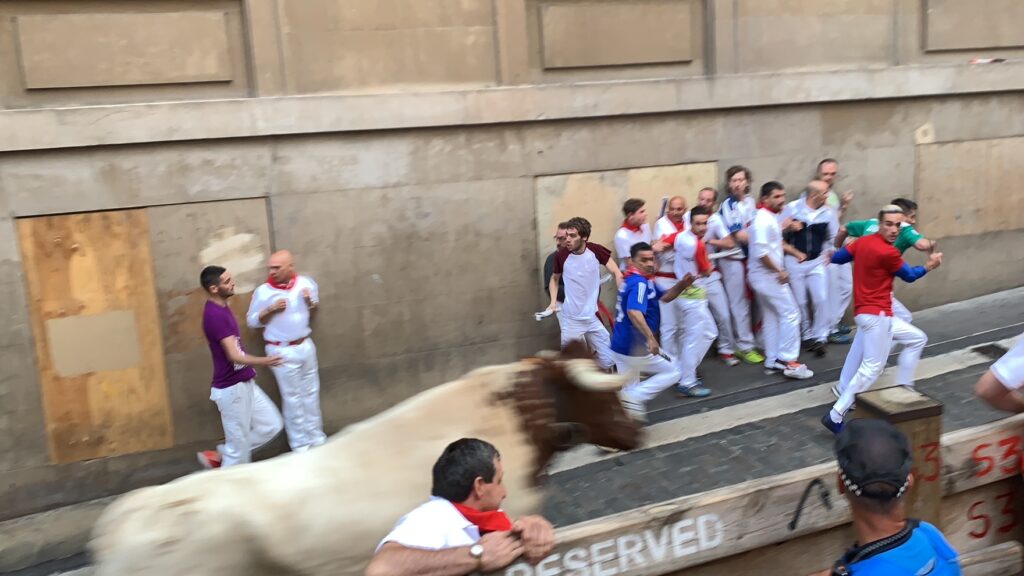
El encierro and the bullfights are the main attractions of the festival.
El encierro or the running of the bulls happens each morning from July 7th-14th.
While the bullfights take place every evening from July 6th-July 14th
How long does San Fermín last
La Fiesta de San Fermín lasts a week in July. The festival runs from July 6th through July 14th every year. For the entire week, activities are happening at all hours of the day.
Who Celebrates San Fermín
While La Fiesta de San Fermín is routed in Catholicism. It does not stop everyone from enjoying the week-long party. There are still traditional catholic portions of the festival, mainly the precession to begin the week.
However, in modern-day the people of Pamplona welcome everyone to celebrate their most notable festival of the year.
San Fermín Bull Run

The San Fermín Bull Run also known as Encierro is the most popular part of the San Fermín festival. People from all over the world come to run in this historic event.
How long does a Bull Run last?
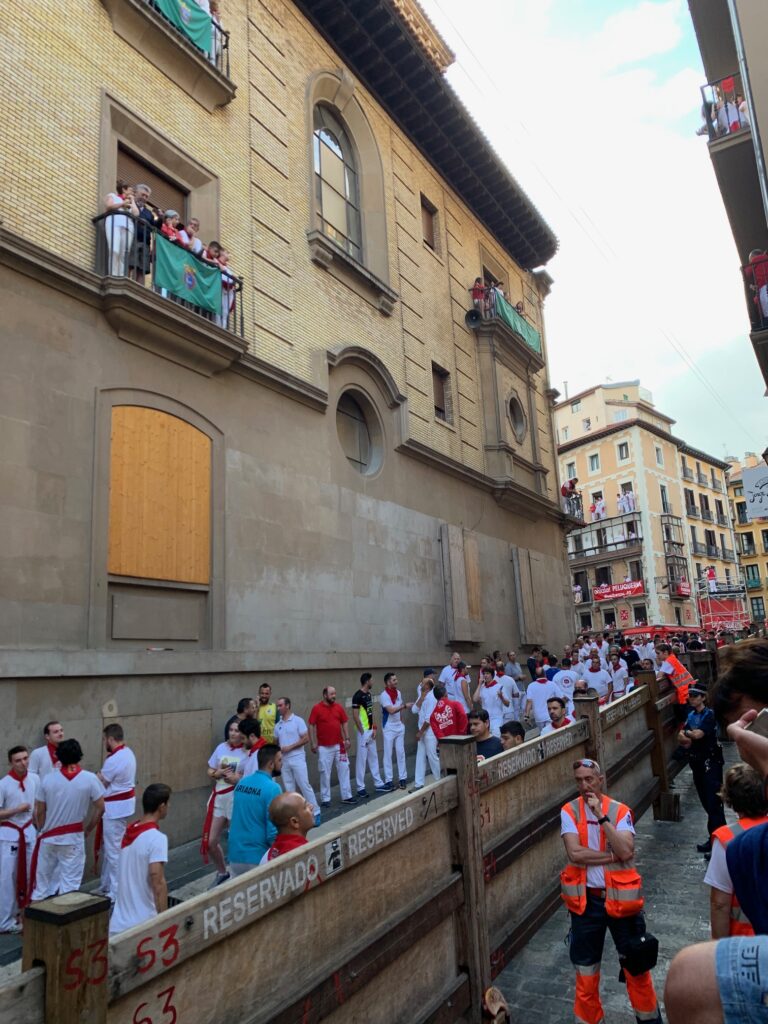
The run is half a mile long and only lasts up to 6 minutes.
Streets for the bull run are blocked off for the safety of the spectators. However, it also confines the runners and the bulls into the same space.
The course ends at the bullfighting arena where the daily bullfights then commence.
Where and when is the Running of the Bulls?
The running of the bulls takes place in Pamplona every morning from July 7th-14th
Encierro begins at the bottom of Calle de Santo Domingo at the Hornacina de San Fermín. Here the runners gather and sing to the altar of the Saint to ask for protection.
At 8 am the six bulls that will fight later that day are released into the streets and el encierro begins.
They run past the city hall and finish in the Plaza del Toro.
How Many Bulls Are in The Running of the Bulls
They release six bulls every morning for the Running of the bulls.
Often they will release the smaller, less ferocious bulls first, and the larger bulls a bit later.
How much does it cost to run with the bulls?
It is completely free to run with the bulls.
However, there are several rules in place for the safety of the runners.
What is forbidden for runners at the Running of the Bulls:
- The presence on the route of minors under the age of 18, who are excluded from the right to run or take part.
- Going beyond the police barriers which those in charge consider advisable to put up for the smooth running of the race.
- Entering zones and places along the route to which access has been expressly prohibited by officials.
- Before the bulls are released, waiting in corners, blind spots, doorways, or premises located along the route.
- Keeping doors of shops or doorways of houses along the route open, with the owners or tenants of the premises concerned of being responsible for ensuring this.
- Remaining on the route in a state of drunkenness, under the effect of drugs, or engaging in any other improper behavior.
- Carrying objects deemed unsuitable for the smooth running of the encierro (including any type of camera or video camera).
- Wearing clothes or footwear deemed unsuitable for the race.
- Provoking the bulls or attracting their attention in any way and for any reason along the route or around the edge of the bullring.
- Running towards the bulls or running behind them.
- Grabbing, harassing, or mistreating the bulls or making it difficult for anyone to leave the encierro during the bullfights with young bulls.
- Stopping along the route and remaining on the fence, barriers, or doorways in such a way as to obstruct the race or hinder the defense of the runners.
- Taking photographs from the streets, fences, or barriers without due authorization.
- Installing any elements that may encroach on the horizontal, vertical, or aerial space along the route, except by express authorization of the mayor’s office…
- Any other act that may hinder the normal progress of the encierro.
Source: Ayuntamiento de Pamplona
What is the point of Running with the Bulls?
While the point of the running was initially to lead the bulls to the bullfighting arena. Civilians acting as cattle herders. In the modern day, it tends to be more about tradition and pride.
The goal is to beat the bull to the arena. If the bulls pass you, then you must stop running.
How many people usually run with the bulls?
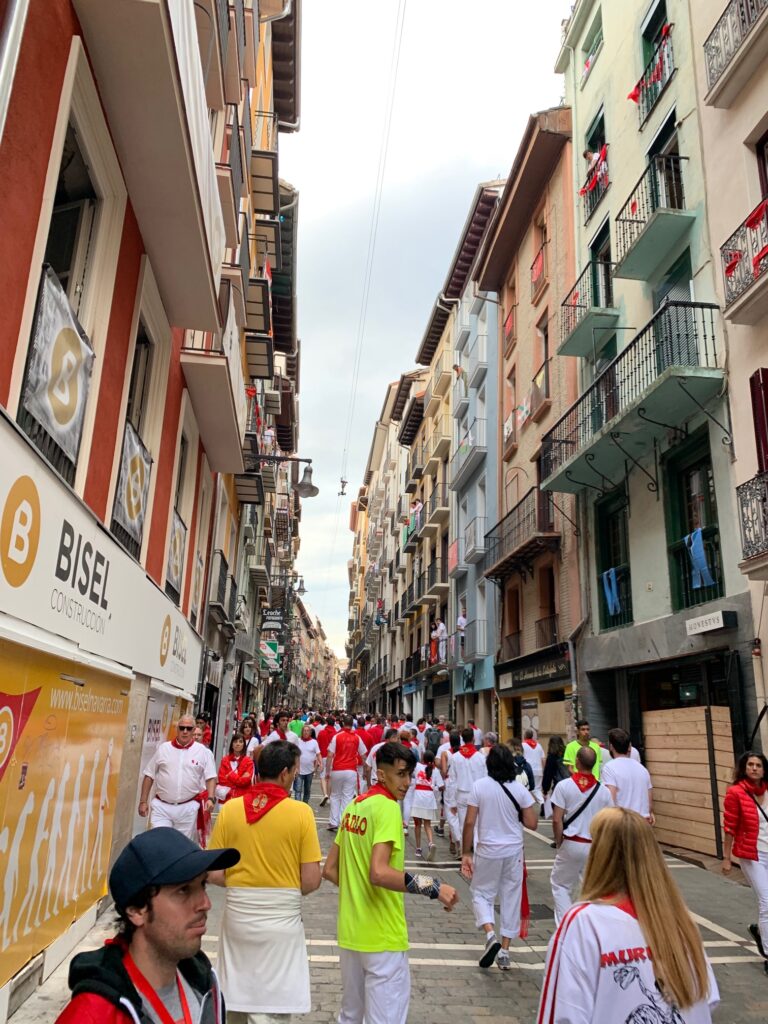
On average two thousand people run with the bulls daily. Due to the large crowds, it is very important to follow the rules of the race.
My friends who ran in the race while I was attending were adamant in saying that the scariest part of the race was the other people you were running with.
Since there are so many people running in a confined space, it is hard to find an area where you can run freely. Often you are stuck to the pace of the person in front of you. There is also a lot of jostling and pushing coming from other participants.
Best way to Watch the Running of the Bulls
Due to the high barriers along the route, it can be difficult to watch the event. It is also illegal to be stationary within the course. This really leaves you with two main options. Watching from behind the barriers, or watching from the balconies.
Watching from the Barriers
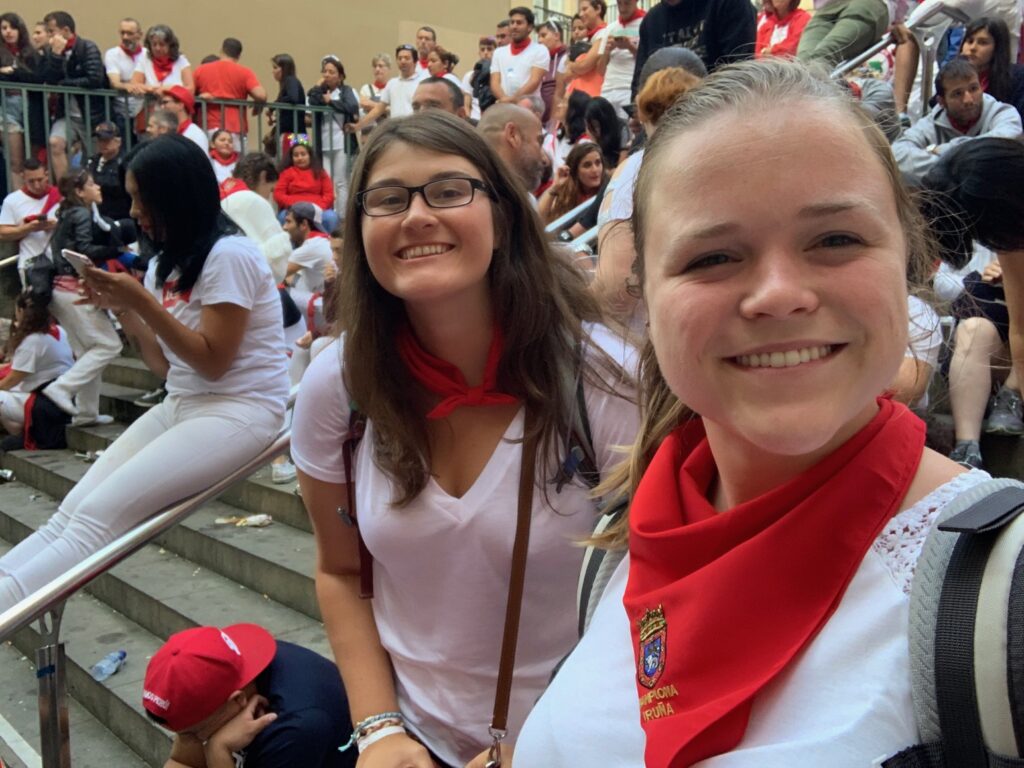
There are several places where people typically set up to watch the race. We set up in a plaza near the beginning of the race.
There is a double barrier of high wooden fences up, I was able to sit at the top of the second fence to get a better vantage point.
Keep in mind, that I had to get there very early to snag that spot. Additionally, I had to stay up there and deal with being super uncomfortable for a long time.
Watching from the Balconies
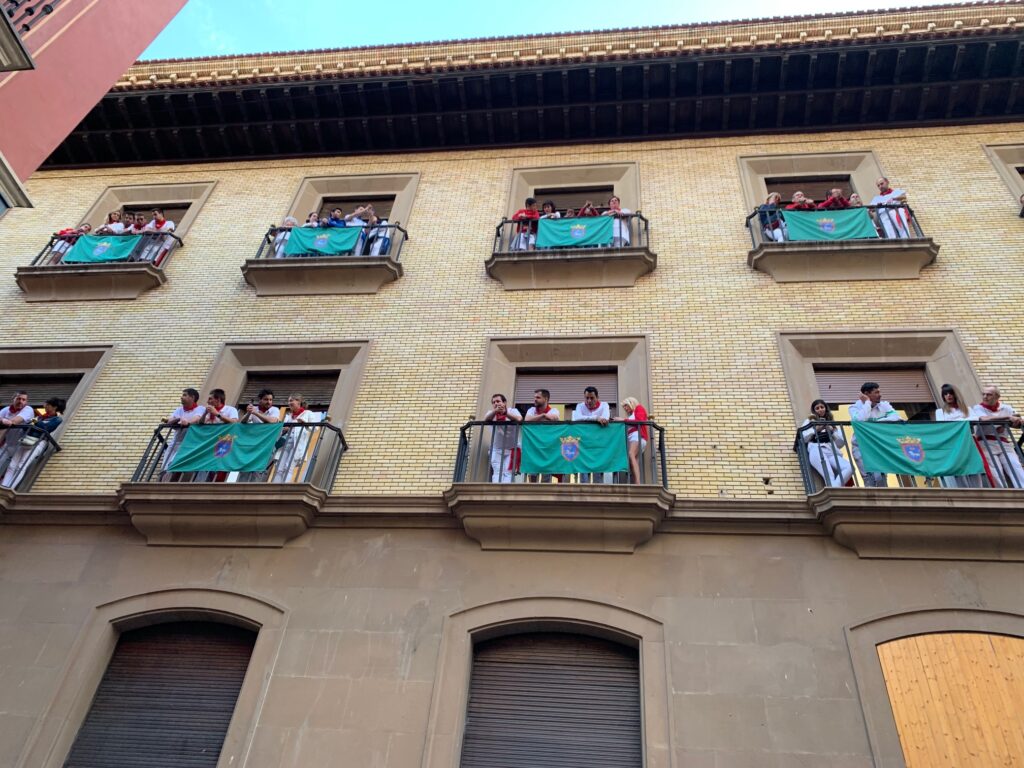
Balconies are honestly the ideal place to watch the running of the bulls. However, these are not free!
Renting a balcony for the festival can get quite expensive. Check here for rental availability.
Does anyone get hurt in the Running of the Bulls?
Yes, people get hurt in a variety of ways during the Running of the Bulls. The majority of injuries include bruises, sprained ankles, broken bones, and in the most extreme cases gorings.
Bruises and sprained ankles are much more common as you are running in a large crowd, with a great deal of pushing and jostling on uneven cobblestone roads.
Being gored by the bulls, while less common, is still a serious risk while running the encierro. Most gorings are not serious, most cause cuts or broken bones. Some do require surgical help and a few have resulted in fatality.
There are Red Cross aid stations and first responders set up along the route in the event of a goring or injury.
Spain bull run deaths
According to records, since 1910, 15 people have died due to bull-related injuries sustained during the encierro.
Is Running of the Bulls still legal?
Yes, The running of the bulls is absolutely still legal, and thriving. Despite the best efforts of animal activists.
What Happens to the Bulls After the Running of the Bulls?
The bulls are not typically injured in the running of the bulls. However, the same bulls from the encierro are then part of the evening bullfights. Unfortunately during the bullfights, most bulls are killed.
In the event of a particularly good fight, the matador can choose to save the bull.
Do they eat the bulls in Running with the Bulls?
While in some places they still eat the meat from the bullfights.
In Pamplona, they do not typically eat the meat from the bulls that are killed during the bullfights of San Fermín. Solely for the reason that these bulls in particular are bred specifically for the festival and for the bullfights during la fiesta de San Fermín.
Is it worth visiting Pamplona?
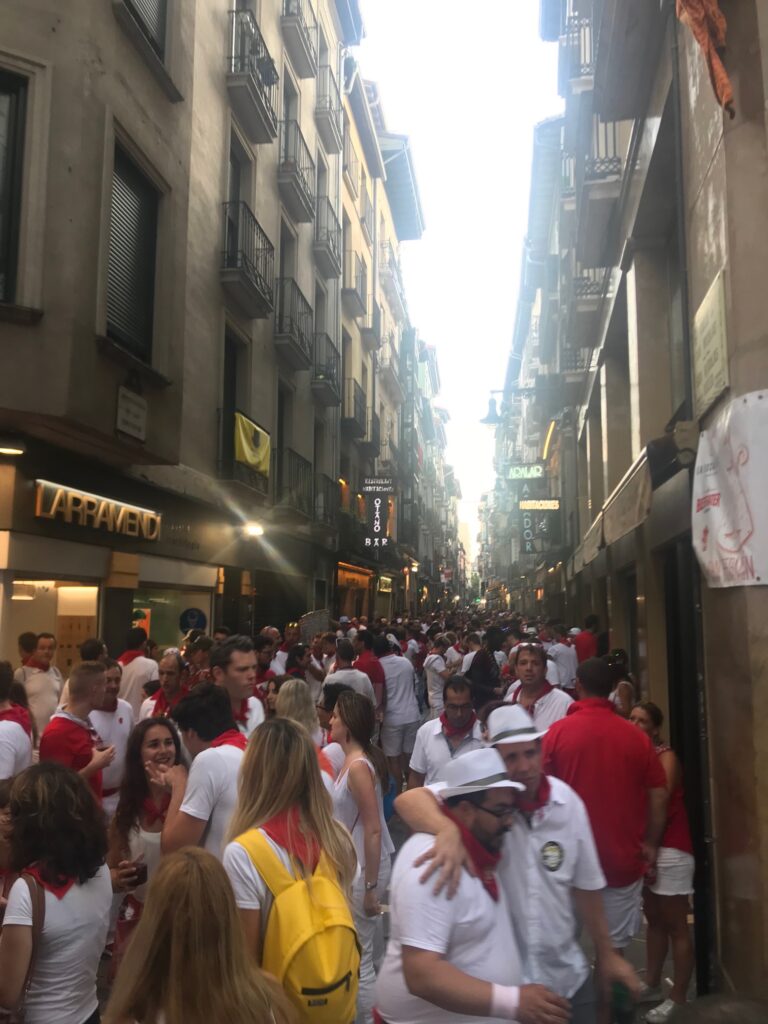
Absolutely. Pamplona is a stunning old city set in the mountainous region of Navarra.
There is so much history and tradition in this city. It would be a sad place to miss.
If you have an opportunity to visit during la fiesta de San Fermín I cannot recommend it enough.
This is a once-in-a-lifetime type festival and it is so worth making the trip for!
How to get to Pamplona
Pamplona is easily accessible from the rest of Spain. For all the best prices and routes check Omio.
It has its own airport which makes travel there very quick and easy.
Pamplona is also a stop on the Renfe high-speed train system. You can reach Pamplona from Madrid in just 3 hours by train.
Busses are also an easy option only costing around 30 euros for the 5.5-hour ride.
Where to stay in Pamplona
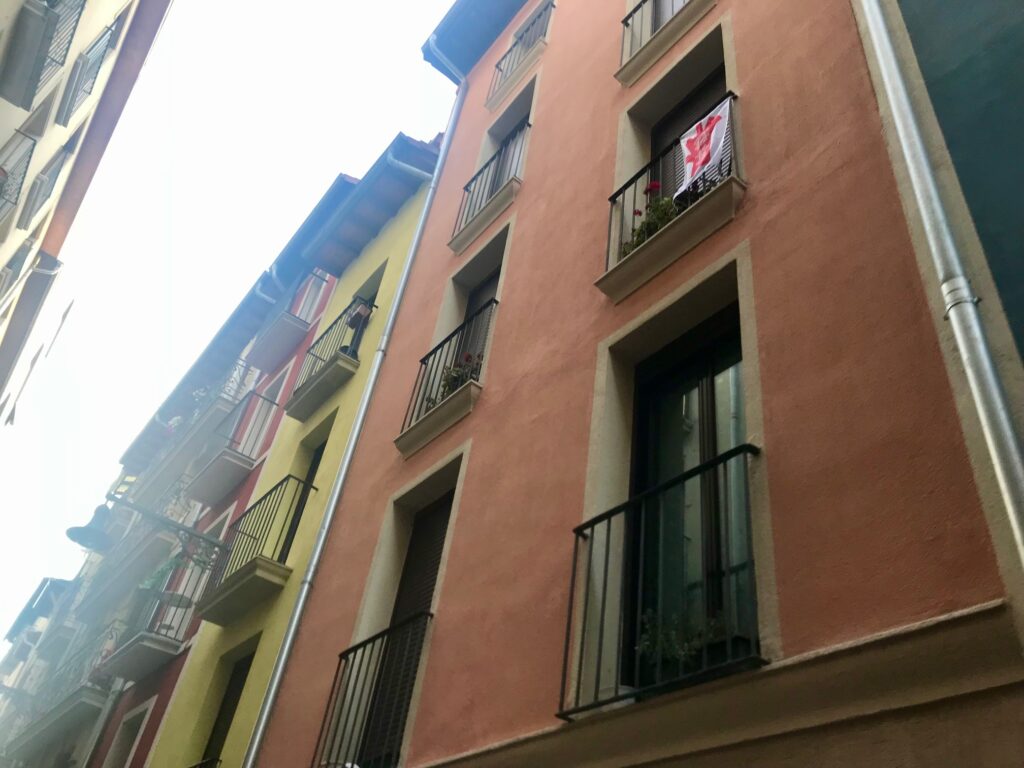
Aloha Hostel Pamplona is a perfectly located accommodation. With great reviews, clean facilities, and reasonable prices. This is really a no-brainer.
If you are looking to book for the festival, be sure to book far in advance.
How much time do you need in Pamplona?
Pamplona would be a wonderful place to spend the weekend. I think you would be able to see the main sights and attractions within a day or two.
Granted, since I was there for just a night, specifically for the festival I didn’t do much sightseeing. However, the city is extremely walkable and beautiful.
How far is Pamplona from the French border?
Pamplona is just 30 Km from the French border. It is a pretty easy route and can be reached by rail or bus.
What is next?
Immerse yourself further into Spanish traditions and culture with more celebrations and destinations.
La Feria de Córdoba
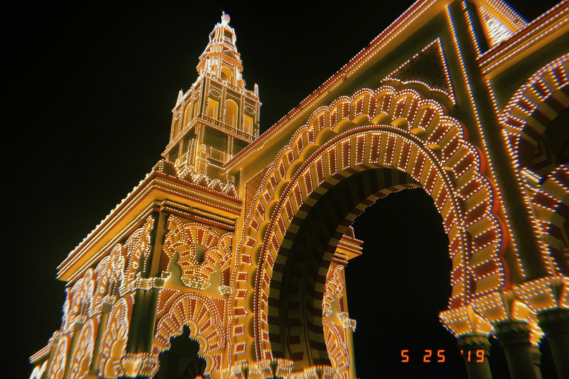
Enjoy the magic of another incredible Spanish Festival at La Feria de Córdoba.
This recognition of Spring happens every May and is a guaranteed good time.
Enjoy the night of a lifetime!
Visit Northern Spain
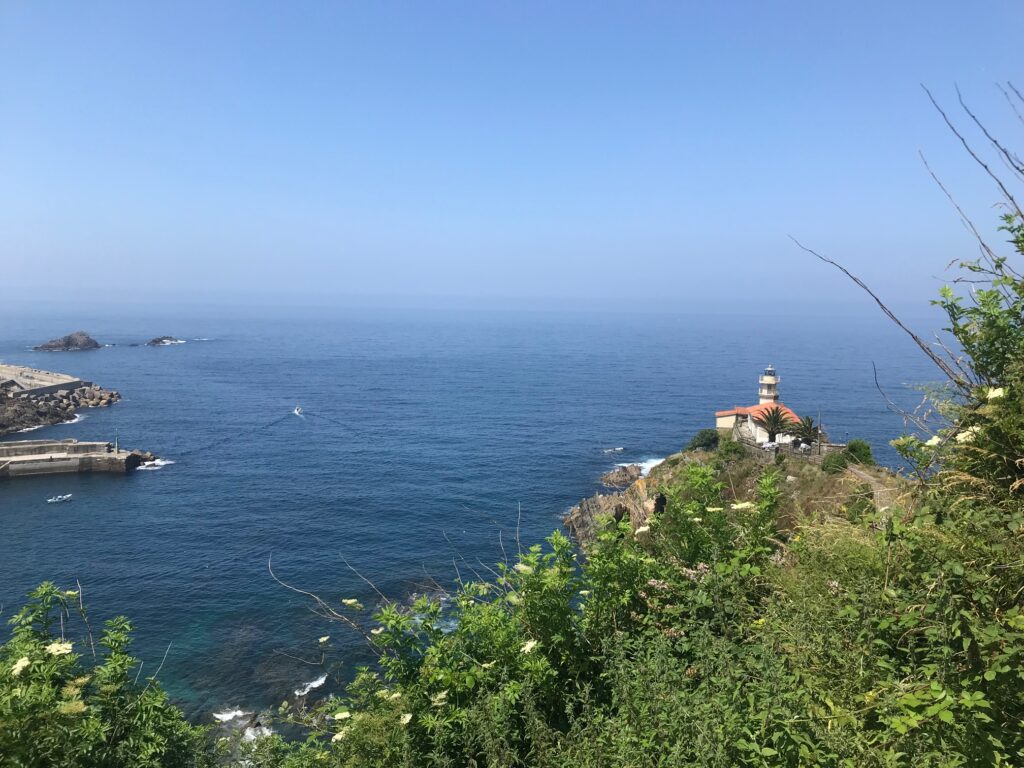
If you are in Navarra celebrating, you should also consider visiting the rest of Northern Spain.
I particularly love the regions of Galicia and Asturias.
Read more about how to travel to those regions in the article that is linked below.